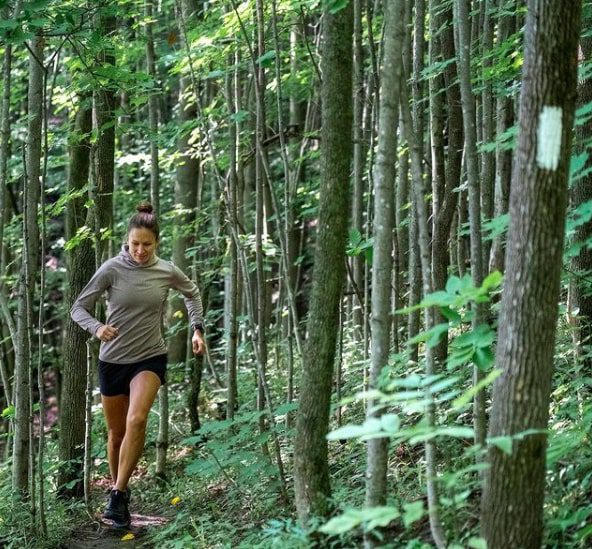Karen Holland smashes overall Bruce Trail FKT
Ultrarunner Karen Holland of Toronto completed the 900-km route at 4:51 a.m. on Sunday after less than nine days of running
 Photo by:
Jody Wilson
Photo by:
Jody Wilson
A woman has smashed the overall (men’s) fastest known time on Ontario’s Bruce Trail. Karen Holland of Kimberley, Ont., started at 6 a.m. on Friday, Sept. 3 and finished her journey on Sunday, Sept. 12 at 4:51 a.m. after eight days, 22 hours and 51 minutes on the trail – more than four hours faster than the fastest men’s (supported) time of 9:03:27, recorded just a couple of months ago by Kip Arlidge of Sundridge, Ont. and more than three full days faster than the women’s (supported) FKT set by Chantal Demers of Barrie, Ont. in 2017.
RELATED: Ontario runner shatters Bruce Trail FKT
https://www.instagram.com/p/CTt0e3NLhIB/
This was the third time in less than a year that the Bruce Trail FKT has been lowered. John Harrison Pockler tackled the route in September 2020, taking four hours off the previous record set by Adam Burnett in 2017. (Pockler and Burnett were both among the many runners who supported Holland in her journey, as were Demers and Arlidge, such is the supportive and congenial nature of the Canadian trail running community.)
It may go without saying, but Holland, 34, is an accomplished ultrarunner. With plenty of 100-milers and multi-day adventures on her resume, she took on the Bruce Trail with the goal of simply finding out how far she could push her body and her mind, while also raising awareness of the Bruce Trail. To do what she did, the math is pretty simple: a 900-km trail in under nine days means averaging more than 100 km (62 miles) a day for almost nine straight days, through a combination of running the runnable parts of the trail and power-hiking the more technical parts.
RELATED: John Harrison Pockler sets new Bruce Trail FKT
https://www.instagram.com/p/CTtOfSJrY3y/
A project like this depends on an experienced support crew who can handle multiple tasks, including driving a support vehicle, route planning, logistics, meal planning, feeding and watering the athlete, and co-ordinating a rotation of pacers. The success or failure of such a project may depend as much or more on the crew as on the ability of the runner. Holland has many friends in the trail world who organized themselves into an effective team to support the FKT – but in the end, she still had to cover the route in record time.
After Arlidge completed his FKT in July, he said, “I think sub-9 is possible, and I looking forward to supporting whoever is crazy enough to give this another try,” adding that he’d like to actively help anyone who wanted to take a crack at running the trail. “I received a lot of help from the ultrarunning community and am looking forward to helping someone else set a new record.” In supporting Holland, he made good on his promise.
https://www.instagram.com/p/CTfXxqVnT_7/
The Bruce Trail is Canada’s oldest long-distance hiking trail, dating back to the early 1960s. The route mostly follows the edge of the Niagara Escarpment from Tobermory (on the northern tip of the Bruce Peninsula) to Queenston (in the Niagara region), and features a variety of terrain, from rocky, hilly singletrack to gentle paths through forest and farm fields, as well as some gravel and paved roads. While some sections are owned by the Bruce Trail Conservancy or by local conservation authorities, much of the route is on private property, and continuing access for hikers and runners depends on the goodwill of landowners.
Holland has set up a Go Fund Me page for those who would like to contribute to the ongoing upkeep of this incredible resource. For more on Holland’s run, click here.


